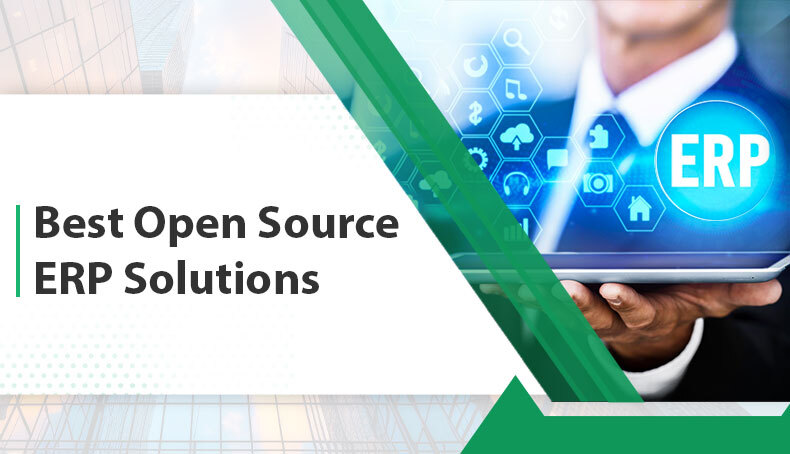Open-source ERP software represents a powerful and cost-effective solution for business operations. Open-source ERP platforms offer the flexibility to customize and adapt the software to specific business needs without the burden of hefty licensing fees. Furthermore, these systems provide a high level of transparency and control, empowering organizations to tailor their ERP solutions to their growth trajectories.
Moreover, open-source ERP software often comes with a wide range of integrated modules that cover various business functions such as finance, inventory management, human resources, and customer relations. Therefore, this integration ensures seamless data flow across different departments, reducing redundancy and improving overall productivity. In this blog, we are going to explore the best open-source ERP software solutions 24-25. Let’s dive deep into them.
What are Open-Source ERP Solutions?
Open-source ERP solutions are defined as greeter control software as compared to traditional ones. In customary software, vendors do not release the source code. It charges more money from the users. On the other hand, in open-source ERP solutions, users have access to code, alter the code, and enjoy additional features.
There is a huge difference between ownership of customary software and open-source software. In open-source ERPs, there is no cost of licensing and you can access the code without any charges. However, some vendors are offering subscription charges for additional features.
Open-source top ERP systems are the perfect option to integrate advanced technology for their growing businesses within their limited resource. Furthermore, these software systems come with the flexibility feature for businesses by adding different functionalities. Thus, these features make them the ideal solution for businesses.
Learn more about the ERP for Pharma Industry.
Best Open Source ERP Solutions for 2024-2025
Below are some of the best open-source ERP software solutions for your business. Let’s have a quick look at them.
Microsoft Dynamics365
Microsoft Dynamics365 is the complete package for your business operations. It provides great functionality for the core areas like accounts, financial reporting, and general ledger. It also comes with effective inventory management features to track the stock, optimize the warehouse processes, and much more. The project management function can also provide the best possible project planning and improve efficiency.
Pros
- Seamless integration
- Customer engagement
- Effective team collaborations
- User-friendly interface
Cons
- Cost may vary depending on the module and functionalities.
Continue to learn more about ERP System in the Construction Industry.
Oracle NetSuite ERP
It is an Open-source ERP software perfect for small to medium-sized businesses. NetSuite comes with strong CRM abilities to regulate sales, customer interactions, and marketing campaigns. Hence, the software solution will offer you enable efficient project planning, resource allocation, and budget control.
Pros
- Highly scalable
- Strong financial modules
- Great financial management
- Excellent customer support
Cons
- Complex implementation process
Odoo ERP
Odoo is one of the well-known Open-source enterprise resource planning software. It offers an integrated suite of apps having multiple modules e.g., manufacturing, accounting, finance, project management, billing, inventory management, billing, and others. The user interface of the software is simple and easy to implement with clear function visibility. The solution comes with the free version and also with a paid subscription.
Pros
- Extensive customization
- Affordable
- Effective support
- User-friendly interface
Cons
- Open source feature has limited capacity for customer support
ERPNext
ERPNext is an open-source ERP system that comes with flexibility made to empower growing small to medium businesses. Furthermore, it can prioritize a clean user-friendly interface, modular app design, intuitive functionalities, and an emphasis on core business processes affordably.
Pros
- Minimum license fees
- Highly cost-effective solution
- Active community for customer support
- Efficient modular design
Cons
- Require expert technical support
SAP Business One
It is the best open-source ERP software for small to large businesses. It can amazingly streamline business operations and centralize business data. The ERP comes with user user-friendly interface that can boost the proven track record to achieve growth.
Pros
- Industry-specific functionalities
- Extensive analytical and reporting tools
- Mobile access
- Highly scalable
- Cost-effective
Cons
- Some complex features need assistance
Acumatica Cloud ERP
Acumatica Cloud ERP is an open-source software system that comes to fulfill the needs of small to mid-sized businesses. It has wide-ranging functionalities, adaptability, and ease of integration. Therefore, the ERP permits your businesses to select the best system elements to streamline processes, get valuable data insights, and much more.
Pros
- Easily scalable
- Powerful financial management
- CRM integrations
- Customize workflow
Cons
- Less industry-specific
Katana Manufacturing ERP
It is an Open-source ERP system pertinently made for the needs of up-to-the-minute manufacturers ERP. Furthermore, Katana prioritizes real-time data visibility, and streamlined production control. The integrated functionalities of the software solution are delivered in a user-friendly interface. Therefore, this emphasis on real-time production insights allows manufacturers to optimize resource allocation, and gain a comprehensive view of the business operations.
Pros
- Real-time production insights
- Streamline BOM
- Shop floor communication
- Remote work capabilities
Cons
- Not suitable for large-scale manufacturers
How to choose the Best Open Source ERP for 2024-25?
Choosing the right open-source ERP solution is not an easy task for consumers as there are many options available in the marketplace. So, you must consider your business needs and evaluate the best features of the software solution. We have compiled some important points regarding the selection of the ERP Let deep dive into it:
Measure Your Business Needs:
Start by evaluating your organization’s requirements. Recognize the key features and functionalities you need, such as accounting, inventory management, CRM, HR, or project management. Understanding your precise needs will help you narrow down the ERP choices that best fit your business model.
Assess Key Features:
Compare features of various open-source ERP solutions. Before proceeding, consider learning about EAI vs. ERP. Focus on systems that offer modularity, allowing you to start with core functionalities and expand as needed. Ensure the ERP solution supports customization and scalability to accommodate your business growth and evolving needs.
Deliberate User Experience:
The user interface is a crucial factor. Pick an ERP system that provides an intuitive and user-friendly experience. A complex system can lead to low adoption rates and increased training costs. On the other hand, a well-designed interface can streamline workflows and improve efficiency.
Check Community Support:
Robust community support and comprehensive documentation are vibrant for troubleshooting and exploiting the ERP system’s potential. Research the size and activity level of the community around the ERP solutions you are considering, and make sure plenty of resources are accessible for support and guidance.
Evaluate Integration Abilities:
Your selected ERP solution must integrate well with your existing tools and systems. Compatibility with other software, like email systems, e-commerce platforms, or third-party applications, can improve efficiency and decrease data silos.
Estimate Security and Compliance:
Security is the most important consideration. Look for ERP solutions with strong security features, e.g., role-based access control, encryption, and regular updates. Moreover, the ERP system must comply with industry standards relevant to your business.
Complete Ownership Cost:
Open-source ERP software is more cost-effective than proprietary systems. However, the costs may be associated with implementation, customization, and ongoing maintenance. So, assess these potential costs to comprehend the complete ownership cost as per your budget.
Conclusion
Selecting the best open-source ERP solution can significantly transform how businesses manage their operations. These software solutions offer a blend of flexibility, cost-efficiency, and adaptability. Furthermore, platforms like Microsoft Dynamics365 and ERPNext exemplify the advantages of open-source ERP systems.
They are providing comprehensive functionalities that can be tailored to diverse industry needs. By leveraging these tools, companies can enhance their operational efficiency, integrate various business processes seamlessly, and scale their systems as they grow.
Ultimately, the best open-source ERP software not only minimizes the financial burden associated with proprietary solutions. It also fosters a collaborative environment where innovation thrives. The active communities supporting these platforms ensure continuous development and support. Hence, it is easier for businesses to stay ahead in a competitive landscape. Embracing the best open-source ERP solutions equips organizations with the tools to drive long-term success.








